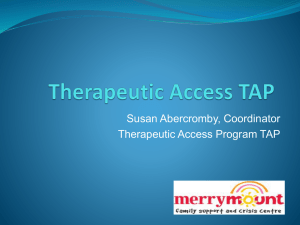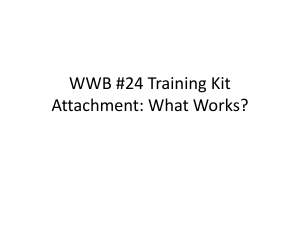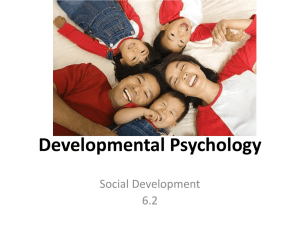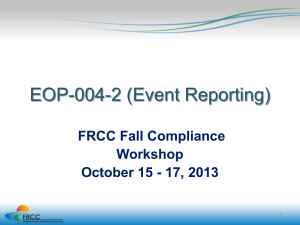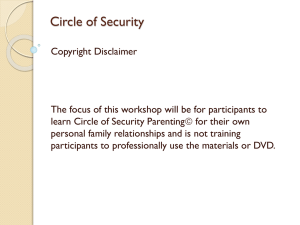Understanding attachment
advertisement
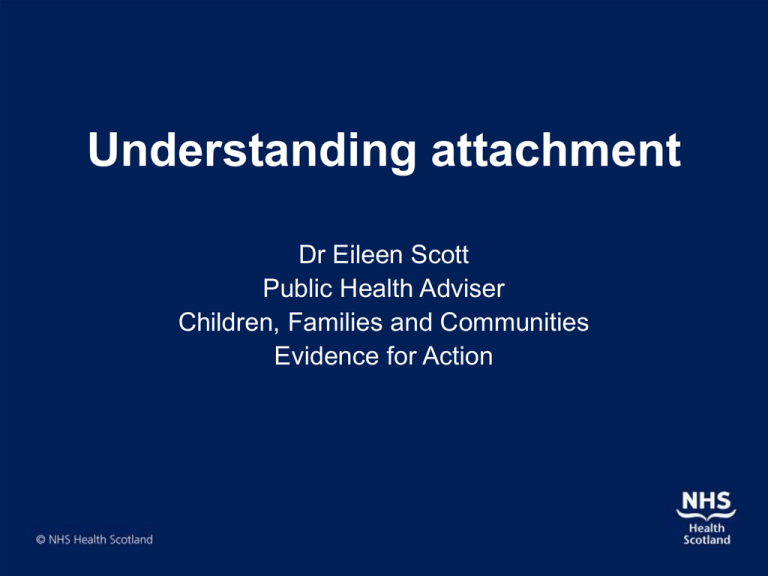
Understanding attachment Dr Eileen Scott Public Health Adviser Children, Families and Communities Evidence for Action Outline • Introduction to attachment theory – attachment what is it? • The nature of attachment – the development of attachment • Styles of attachment • Promoting secure attachment – the effectiveness of interventions Attachment – what is it? • Theory developed by John Bowlby in the 1950s ‘the disposition of the child to seek proximity to and contact with a specific figure and to do so in certain situations, notably when he is frightened, tired or ill.’ • Ability to form attachments is biological and present from birth Attachment = bond from child to caregiver Bonding = bond from caregiver to child Development of attachment • Develops over time and through experience of the caregiving relationship • Caregiver responses influence the quality and style of child’s attachment • A sensitive response is the ability to understand and react appropriately and quickly to child’s attachment behaviour. Sensitive, responsive care is associated with secure attachment. • Abusive or neglectful home environments are associated with disorganised attachment (Van Ijzendoorn et al , 1999) • Caregiving is one aspect of parenting, other important aspects include feeding, teaching and play. Attachment Styles Why does attachment style matter? Secure • • • • Self confidence Self esteem Ability to cope with life stress Emotional Control Disorganised • • • Relationship problems Emotional problems Violence and aggression But it’s not deterministic – other factors such as life stress are likely to influence life outcomes. Children with secure attachment can develop problems and most children with insecure attachment do not have significant problems (Sroufe et al, 2006; Prior and Glaser, 2006) Promoting secure attachment Promoting secure attachment • Effective interventions specifically focus on improving sensitive responses to child’s attachment behaviour • Interventions which enhancing parental sensitivity are universally effective (including high risk populations) • Most effective interventions are brief and behaviourally focused e.g. – Encouraging close physical contact i.e. soft carriers and kangaroo care – Providing information on sensory and perceptual capabilities of infants • Promoting the development of secure attachment and reducing disorganised attachment has the potential to reduce health inequalities within the early years and longer term. (Barlow et al., 2008; Bakermans-Kranenburg et al., 2003, Demott et al., 2006) References • • • • • • • Bakermans-Kranenburg MJ, Van Ijzendoorn MH. Less is more: Meta-analyses of sensitivity and attachment interventions in early childhood. Psychological Bulletin. 2003; 129 (2):195–215. Barlow J, Schrader McMillan A, Kirkpatrick S, Ghate D, Smith M, Barnes J. Health-led parenting interventions in pregnancy and the early years. Research Report DCSF–RW070. London: DCSF; 2008. Bowlby J. Attachment and Loss: Vol. 1 Attachment (2nd edn). London: Hogarth Press; NY Basic Books; 1982. Demott K, Bick D, Norman R et al. Clinical Guidelines and Evidence Review for Post Natal Care: Routine Post Natal Care of Recently Delivered Women and their Babies. London: National Collaborating Centre for Primary Care and Royal College of General Practitioners; 2006. Prior V, Glaser, D. Understanding attachment and attachment disorders. Theory, evidence and practice. London: Jessica Kingsley Publishers; 2006. Sroufe, L.A. Attachment and development:a prospective, longitudinal study from birth to adulthood. Attachment and Human Development. 2006; 7:4, 349–367. Van Ijzendoorn MH, Schuengel C, Bakermans-Kranenburg MJ. Disorganized attachment in early childhood: Meta-analysis of precursors, concomitants, and sequelae. Development and Psychopathology. 1999; 11, 225–249


